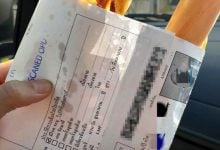Thai Finance Ministry enhances data use for economic growth

The Ministry of Finance is advancing its data utilisation efforts to develop comprehensive profiles of Thai citizens’ liabilities and assets, aiming to bolster economic development.
Permanent Secretary Lavaron Sangsnit revealed that creating a data lake will enable the government to craft improved national development policies and identify regional strengths and weaknesses. This system will consolidate diverse information about citizens, including tax records, credit bureau data, land ownership, utility payments, and loan histories, Lavaron said.
“This information will be instrumental in formulating future policies, such as the negative income tax, to better target welfare payments.”
According to Lavaron, the data will also highlight individuals’ financial discipline, aiding financial institutions in loan approval processes.
An anonymous source within the ministry disclosed that the data lake will encompass information on individuals, legal entities, and spatial data, sourced from 20 different inputs for analysis.
Examples include income data from the Revenue, Customs, and Excise departments; state welfare card data for 13.5 million individuals from the finance ministry; welfare data from the Comptroller-General’s Department; savings deposit information for 45 million people from the Deposit Protection Agency; National Credit Bureau data for 32 million people; student information from the education ministry; data on 24.5 million social security insured persons from the Social Security Office; data on 90,000 Otop (one-tambon one-product) entrepreneurs and 180,000 products; data on 175,000 lottery vendors from the Government Lottery Office; and information on 342,000 public drivers’ licences from the Department of Land Transport.
This extensive dataset will help pinpoint regional strengths and vulnerabilities across various sectors, including infrastructure, public health, education, economic stability, human resources, and the environment. For instance, infrastructure assessment includes 12 indicators such as night-time light intensity per area and road length per area.
In education, there are 15 indicators, including English proficiency and the number of schools per area. Human resource challenges are measured with 21 indicators, covering population density, mortality, and suicide rates.
Historically, the Fiscal Policy Office has leveraged data to drive major government initiatives, including the state welfare card project for 13.5 million people and the Eat, Shop, Spend (Chim Shop Chai) project, which attracted 11.8 million participants, reported Bangkok Post.
By integrating and analysing this data, the Ministry of Finance aims to enhance policy accuracy and effectiveness, ultimately fostering more targeted and equitable economic growth across Thailand.
Latest Thailand News
Follow The Thaiger on Google News:


























